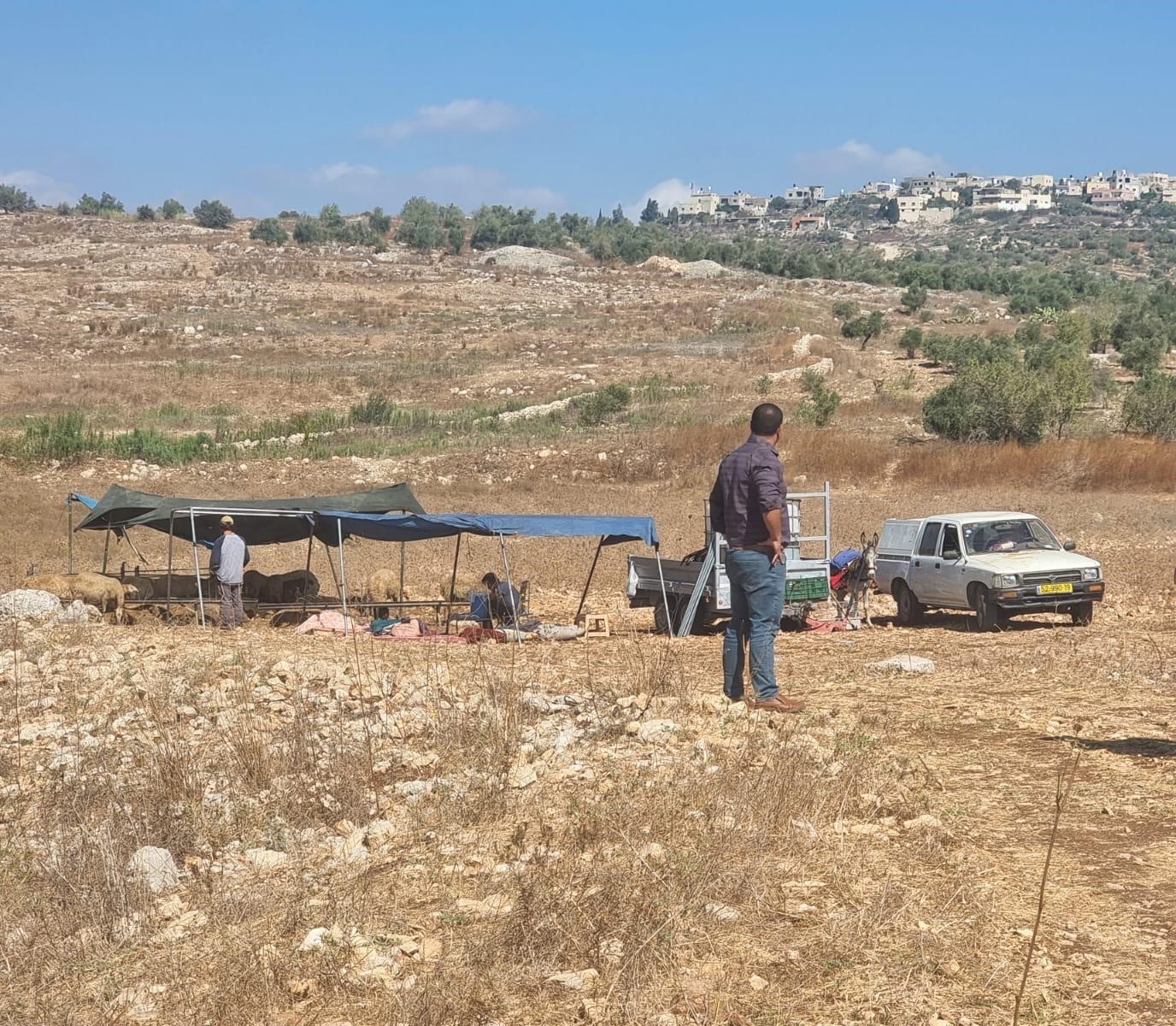
Israel’s settlement expansion is remarkably and unprecedentedly accelerating in the West Bank in various forms aimed at entrenching the Israeli control over the land. The most alarming of these forms is pastoral settlement expansion, which uses agricultural and pastoral activity to cover up the seizure of Palestinian land. Sebastia in northwestern Nablus sets a vivid example for this phenomenon where establishment of pastoral settlement outposts has surged, serving as a tool for appropriation of extensive areas of Palestinian land and displacement of their rightful owners.
This report documents Israel’s pastoral settlement expansion in Sebastia and its surrounding areas and highlights settlers’ violations committed under direct support from the Israeli occupation authorities. The report also reviews the impact of these violations on the Palestinian residents, including the restrictions on farmers, denial of access to land, forced displacement, destruction of natural resources and attempts to Judaize the historical archaeological site. All these violations are part of a broader and intensified settlement campaign targeting the whole West Bank.
Israeli Pastoral Settlements as a Tool for Land Seizure
PCHR’s field documentation indicates that the Israeli Occupation Forces (IOF) is altering the geographic and historical dynamics of Sebastia through entrenching the presence of a pastoral settlement outpost, which was established by settlers on Palestinian-owned lands, west of the village. Since late last year, this settlement outpost has noticeably expanded to Palestinian-owned lands in Basin no.4 of 600 dunums as the number of caravans and tents has increased in addition to the number of settlers totaling more than 50.
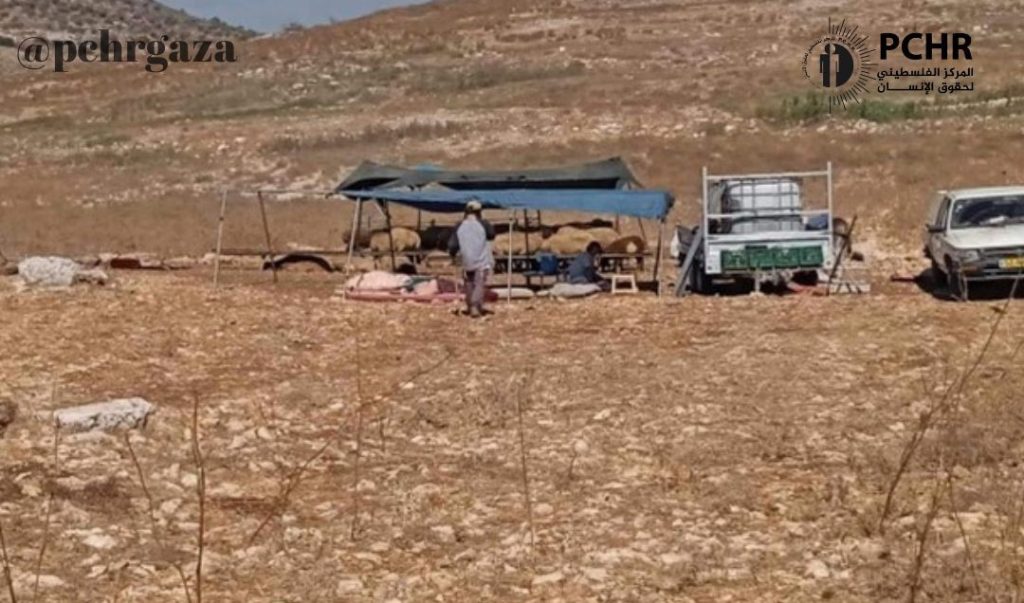
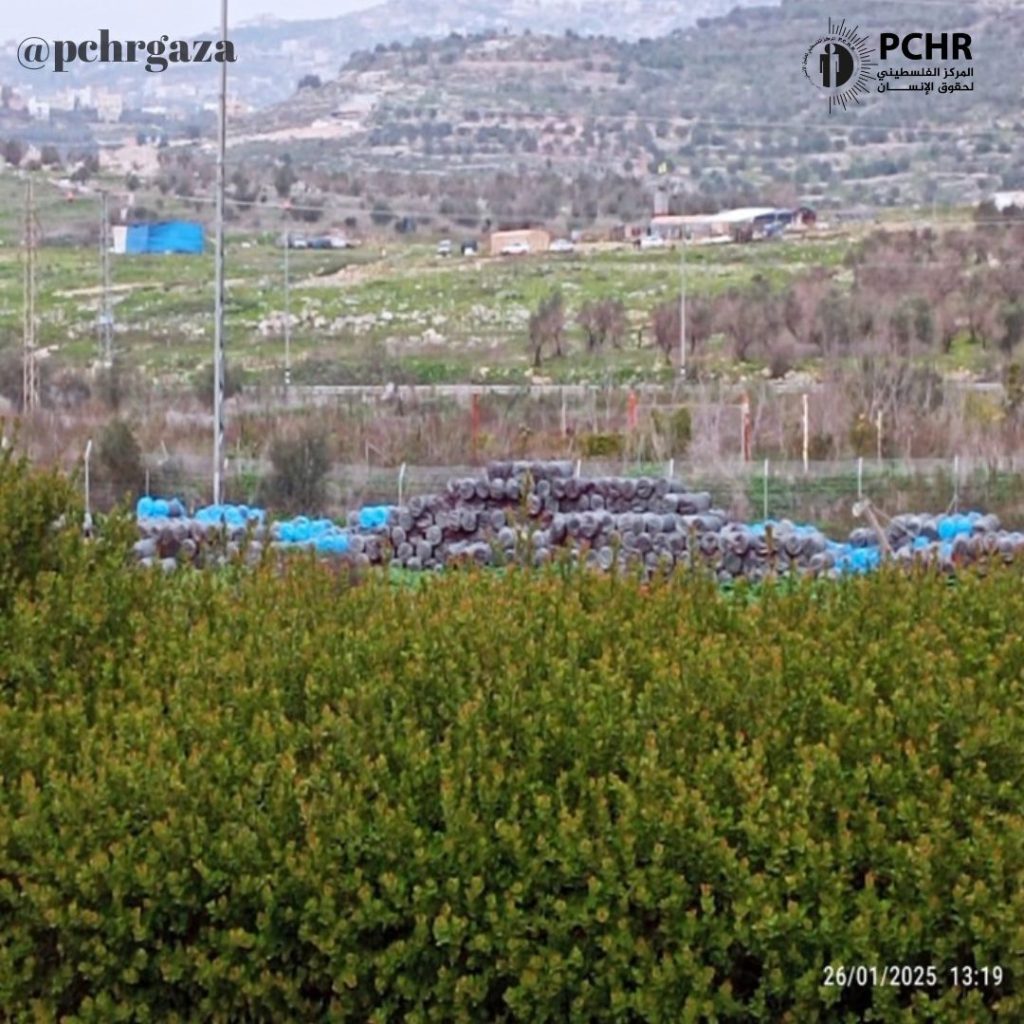
According to information collected by PCHR’s field researchers, on 20 January 2025, the settlers started establishing an agricultural road paving it with base course to connect the settlement outpost with “Shavei Shomron” settlement, which was established on 400 dunums of Basin no. 4, western Sebastia. It should be noted that the road had been previously established by Palestinian farmers so they would easily access their lands in the area. Moreover, the settlers planted olive seedlings in extensive areas of Palestinian land aimed to seize them, expand the outpost and further extend the settlement.

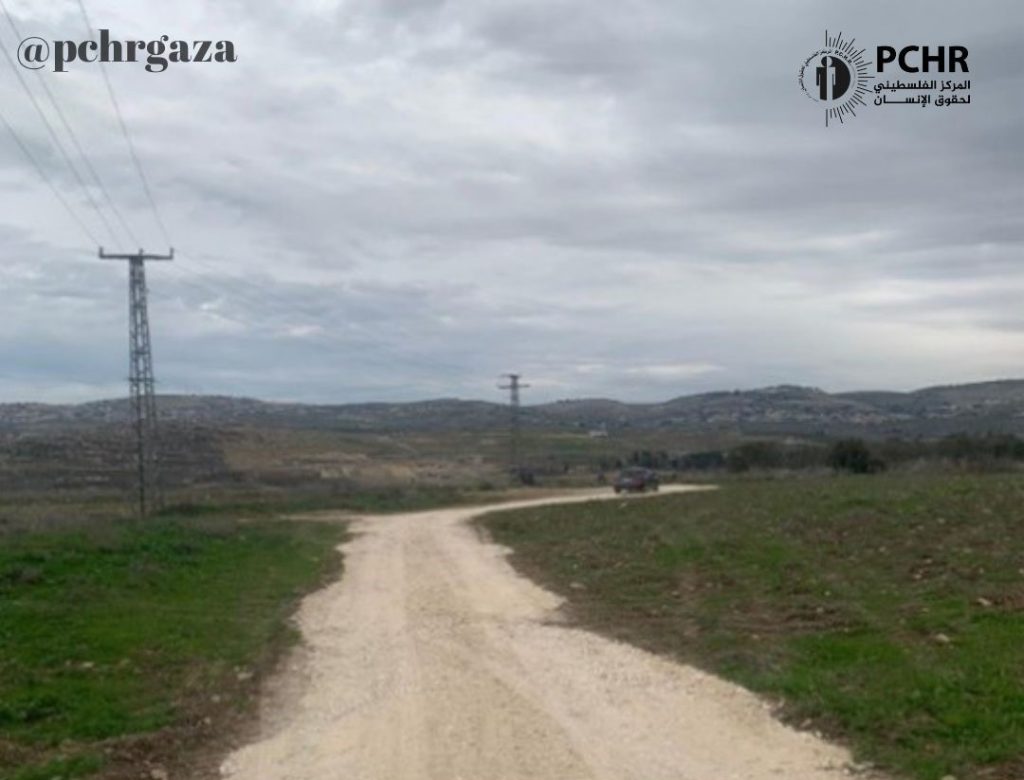
Setter violations under IOF’s Protection
The Israeli settlers have conducted attacks under the protection of IOF that has imposed further restrictions on Palestinians’ movement in the area to pave the way for settlers’ attacks, including land seizure and imposing new realities.
According to information and testimonies gathered by PCHR’s field researchers, for several weeks, IOF have conducted daily raids at around 19:00 in Sebastia village. They force shop owners to close amid teargassing and gunfire, compelling people to evacuate the streets.
With empty streets and a closed off village, IOF provides protection for settlers, who have intensified their raids into the archaeological area to perform their religious rituals and Talmudic prayers. By this, settlers aim at imposing new realities on the ground.
Military order to seize land in the area
On 24 July 2024, the Israeli occupation authorities issued a military decision ordering the confiscation of 1300 sqms of the archaeological area in Sebastia. The confiscated land is located on the top of a hill in the archaeological area. Moreover, IOF has allocated 33 million shekels to establish an infrastructure for settlement expansion purposes as a security installation was established on the confiscated land to serve settlers.
The owners of the confiscated land have hired lawyers and filed appeals before Beit El Court; however, the Israeli authorities did not respond, nor did they stop land seizures.
Assaults on farmers during olive harvest season
As the olive harvest season started in October 2024, settlers, under IOF’s protection, attacked Palestinian olive harvesters with sticks, gas and stones. As a result, Ahmed Tawfiq Ghazal (74) was killed after being pepper-sprayed and suffocating, according to PCHR’s field investigations.
Due to these recurrent attacks and fearing for their lives, many farmers refrained from going to their lands to harvest olives. Meanwhile, settlers and their families were seen picking olives from the Palestinian-owned lands in Basin no. 4, exploiting the Israeli restrictions imposed on the rightful owners’ access to their lands.
Due to these restrictions and attacks, four Palestinian families of 20 members were forced to evacuate the area near the settlement outpost in early 2024 though they had lived there for 30 years.
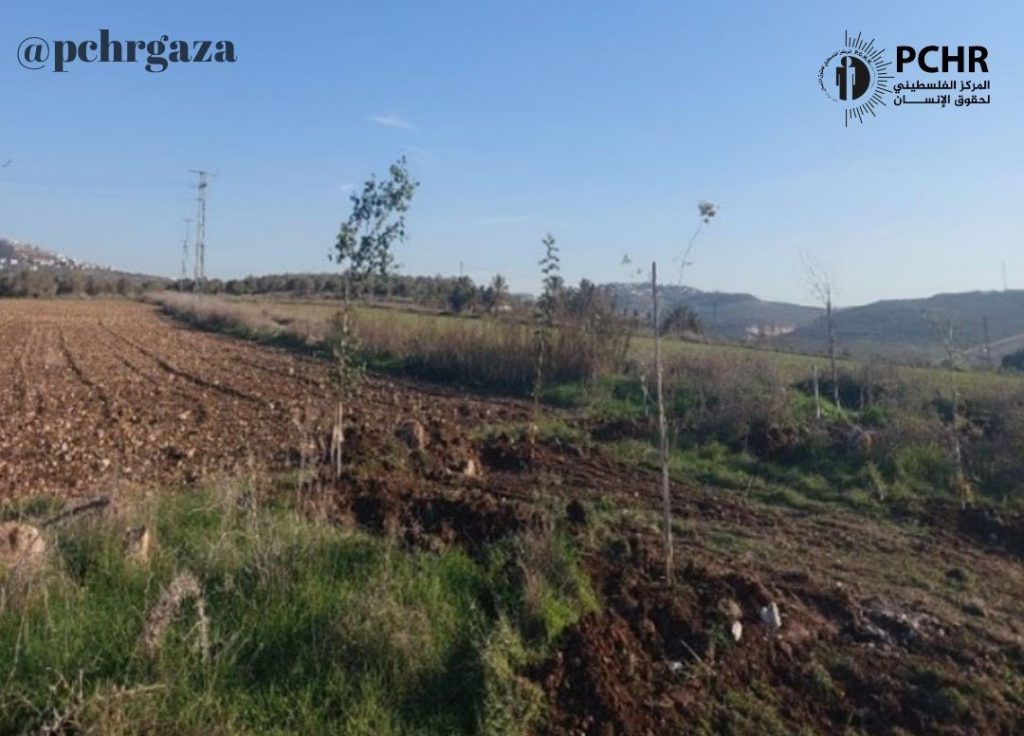
Testimony on the impact of IOF and settler attacks
On the Judaization of the archaeological area and closure of shops, Samer Nazmi Hamdan Al-Sha’er (49) said to PCHR’s field researcher:
“On 21 July 2023, a Palestinian was killed and another was wounded after IOF opened fire on a vehicle driving out of the village in the afternoon. Since then, people have refrained from visiting Sebastia in the evening. After 07 October 2023, IOF escalated their daily raids, repeatedly forcing the archaeological area to close and costing me losses up to 30,000 shekels as I am renting a stall in the area. Moreover, IOF intensified their repressive measures, inflicting a tourism and economic setback on the village.”
Sebastia
Sebastia is a village located in northwestern Nablus City, 12 kilometers away from the City with a population of 3800 people and a land area of 5000 dunums; 40 percent of which is located within Area C. Shavei Shomron settlement is established on part of Basin no. 4, which occupies 600 dunums of Palestinian-owned land in the village, and located in the southwestern side.
Since the beginning of the Israeli occupation in the West Bank in 1967, Israel took over the archaeological area of 2000 dunums in Sebastia. The area includes many important archaeological sites reflecting different civilizations such as the Roman amphitheater, the colonnaded street, the Temple of Augustus, the basilica square, the ancient wall, the Roman city, and the Church of John the Baptist.
Judaization of the archaeological area in Sebastia
Following Oslo accords, the archaeological areas in Sebastia have been classified within Area C, which is under Israel’s full control, while the rest of the village has been classified within Area B, where the Palestinian Authority exercises administrative control but shares security control with the Israeli authorities. In 2018, the Belgian Government, in cooperation with UNESCO, implemented a project to restore al-Baydar Yard, leading to a boost in tourism in the area. However, Israel escalated its repressive measures by closing checkpoints leading to the village, denying visitors’ access and intensifying setter raids. As a result, the economic situation and tourism declined. Meanwhile,IOF were facilitating settler raids into the area in the mornings, spending long hours with the area totally closed off. By the end of 2022, settlers established a pastoral settlement outpost in the Ramin Plain on Palestinian-owned lands of Deir Sharaf, Sebastia, and Naqoura, around 1,000–1,500 meters away, west of Sebastia.
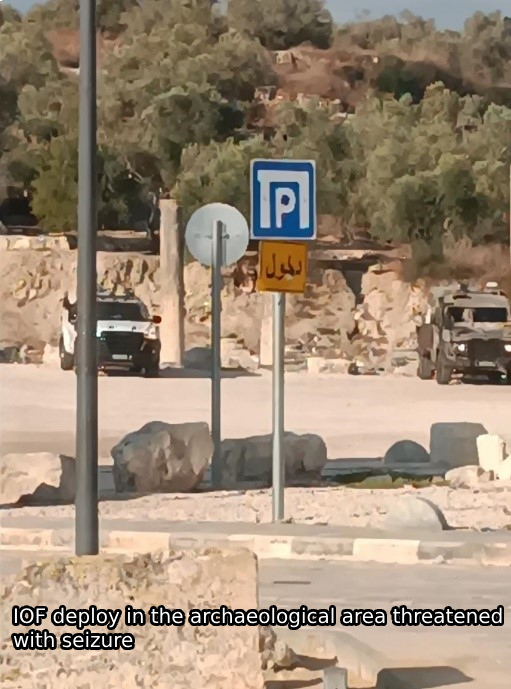
Threat of settlement expansion and urgent need for international action
The pastoral settlement policy in Sebastia is a serious threat to
Palestinians’ rights, leading to the forced displacement of the residents, destruction of livelihoods and obliteration of the village’s historical identity. These unabated violations require an urgent international action to exert pressure on Israel to cease its illegal settlement plans and to respect the international law and Palestinians’ right to live safely on their land.
PCHR recalls the advisory opinion by the International Court of Justice (ICJ) in July 2024, which has concluded the illegality of Israel’s occupation in the Gaza Strip and West Bank, including East Jerusalem. By this, Israel must end its illegal presence as soon as possible, cease immediately its settlement activities and evacuate all settlers from the occupied Palestinian territory.
The rapidly evolving financial sector receives dedicated attention on BusinessIraq.com, with regular updates on banking reforms, currency developments, and investment regulations. Our expert analysis covers everything from traditional banking to emerging fintech solutions, providing crucial insights for financial professionals and investors operating in Iraq’s market.
Thank you for this valuable piece of content!